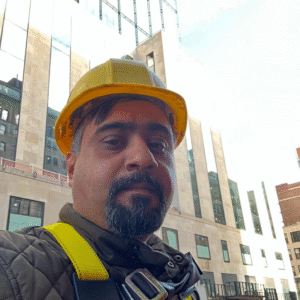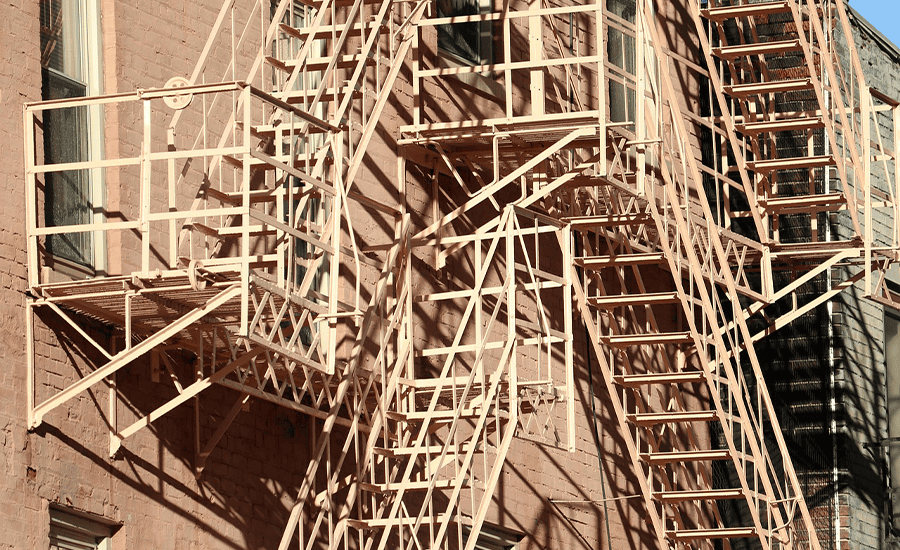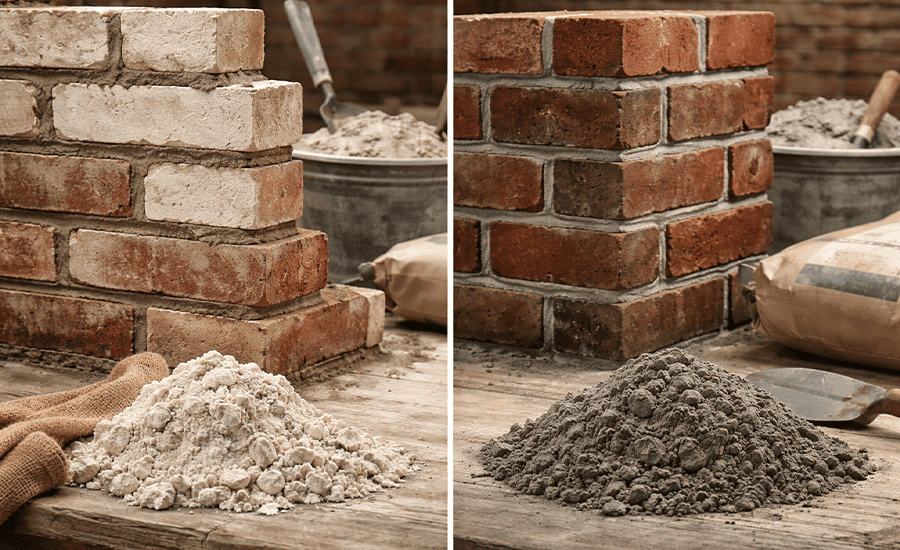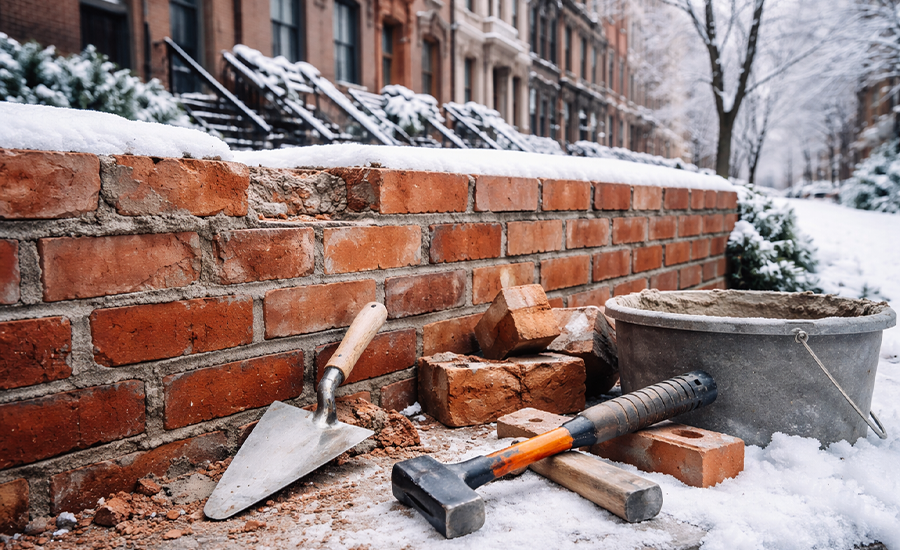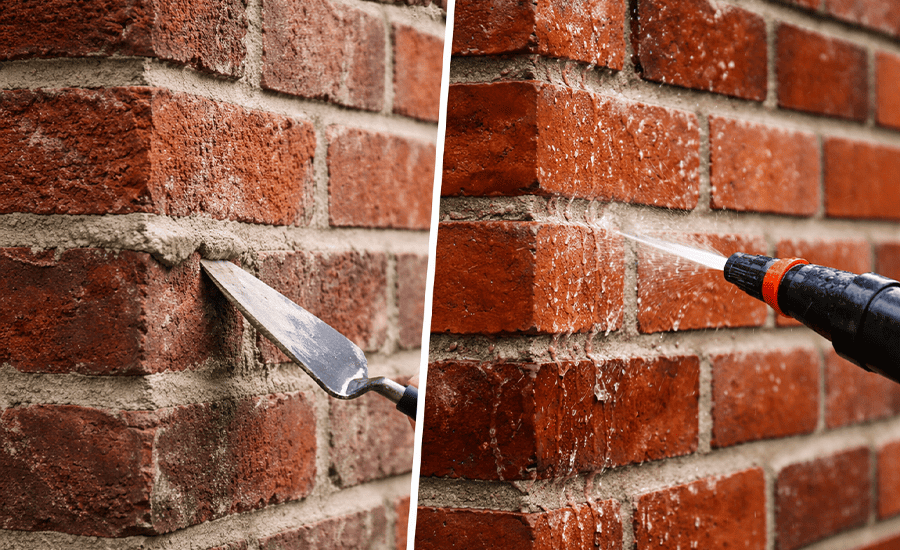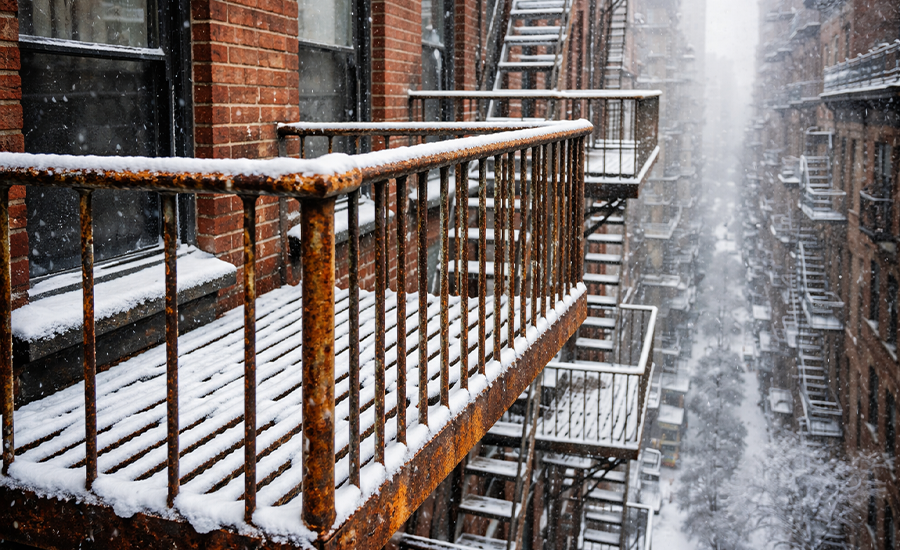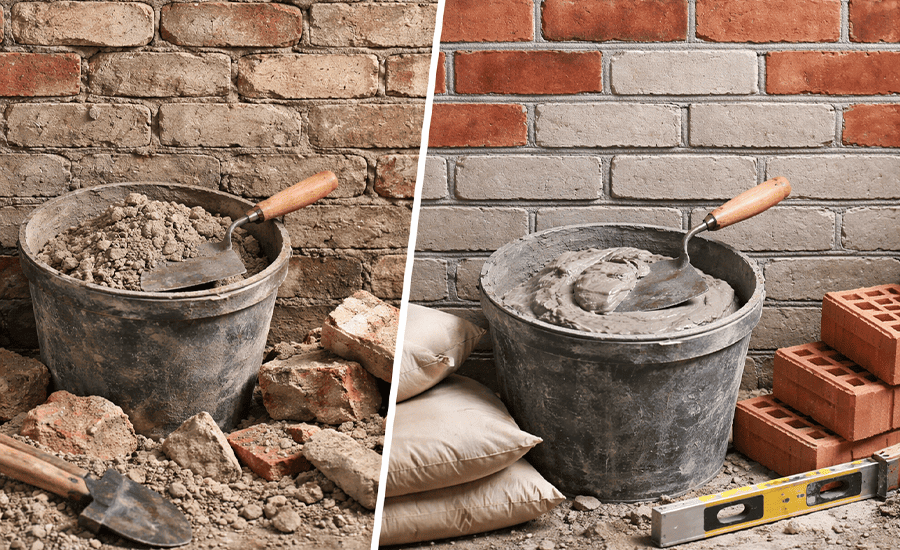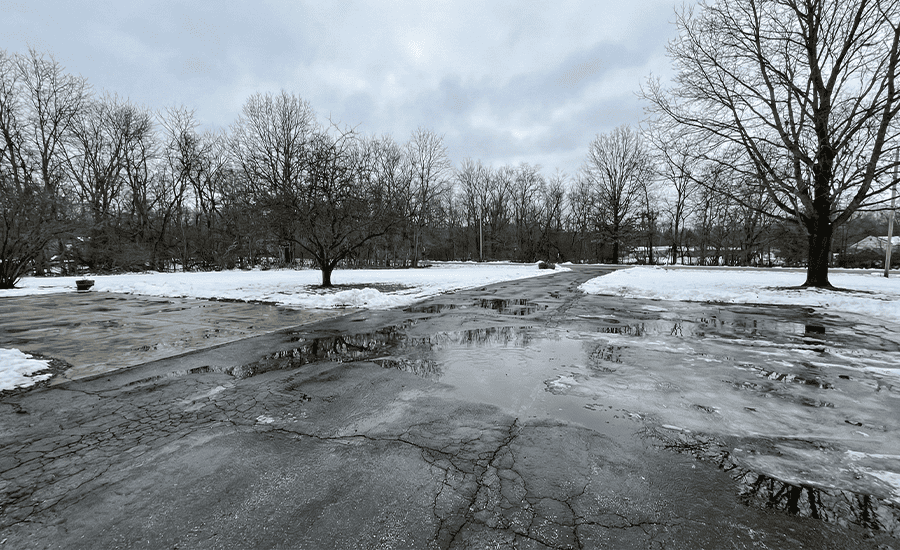Fire escapes are the most reliable and safest path of evacuation in the time of emergency, so it is important that they are constructed with sturdy, high-quality, and durable materials. It can be a one-time investment to choose the best material for fire escape, as it won’t require regular and consistent upkeep, stay strong, prevent rusting, and be easily operational 24/7. Make sure to hire a professional contractor who can offer inspections, commit to certifications, and meet all the NYC safety codes and regulations. Always look up the types of fire escape you want and then choose the ideal material according to your fire escape installations.
In this blog, we’ll explore the significance of using the appropriate materials, positive attributes, downsides, and where they are commonly used.
Importance of Selecting the Right Fire Escape Material
Using high-quality materials for fire escapes is important for structural strength and integrity. The following points tell how fire escape material matters:
- It enhances lifespan and prevents rusting of the steel framework.
- It has the heavy-weight-bearing capacity and strength to control emergencies during evacuation.
- It lowers the frequent repair cost and ensures it is low-maintenance.
- It complies with NYC Building safety codes, including those applied to external fire escapes still required in NYC.
- It matches both modern and historic aesthetics.
The choice of material also depends on the fire escape style. Explore the full list in what are the different types of fire escapes.
Which Fire Escape Material Is Right For Your Building?
Here are some essential materials used in NYC apartment fire escape, which help you make the right choices for your building’s fire escape:
1. Galvanized Steel
A durable and affordable choice that offers strength and protection against rust.
Positive attributes:
- It is ideal and durable for multi-story structures.
- The zinc coating protects from rust.
- It withstands heavy foot traffic.
- It is more reasonable in rates compared to stainless steel.
Potential drawback:
- It starts corroding if the zinc layer coating is damaged.
- It needs regular upkeep and repainting.
Commonly used in:
- Apartment buildings.
- Commercial properties.
- Urban environments.
Upkeep guide:
- Make sure to conduct annual inspections and perform touch-ups to prevent exposure of bare steel.
2. Stainless Steel
A premium option that combines modern appearance with long-lasting performance.
Positive Attributes:
- Naturally resistant to corrosion and rust.
- Excellent appearance with minimal upkeep.
- Ideal for areas exposed to moisture or salt air.
- High structural integrity and fire resistance.
Potential drawback:
- More expensive than other options.
- Requires skilled welding and installation.
Commonly used in:
- Coastal or humid regions.
- Industrial facilities.
- Premium buildings where aesthetics matter.
Upkeep guide:
- Make sure to occasionally clean it with a soft cloth to remove grime or salt buildup.
3. Aluminum
A lightweight material ideal for buildings needing easy installation and low upkeep.
Positive Attributes:
- It is easy to install on older buildings and often used in rooftop fire escapes because of its lightweight design.
- It does not rust, thanks to its natural oxide layer.
- Minimal maintenance required.
- Great for structures that cannot bear heavy loads.
Potential downsides:
- Lower strength than steel; may deform under high stress.
- Susceptible to galvanic corrosion if connected to steel.
Commonly used in:
- Contemporary designs.
- Rooftop or side-wall fire escapes on older façades.
Upkeep guide:
- Make sure to often inspect joints and anchors for corrosion or loosening bolts.
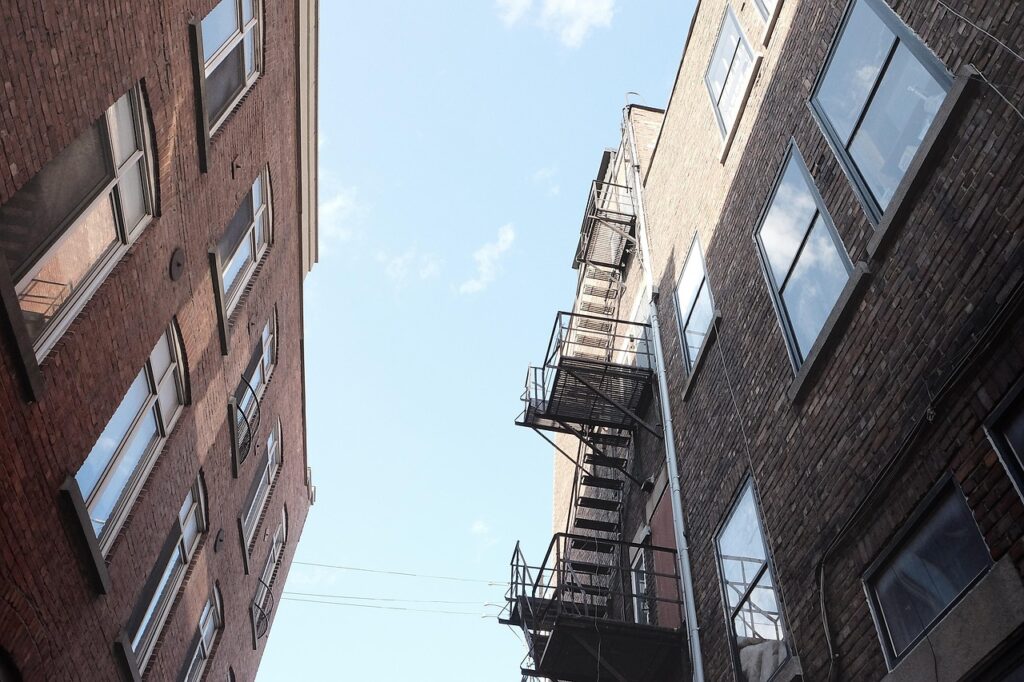
4. Cast or Wrought Iron
A classic material that enhances both safety and the architectural charm of buildings.
Positive Attributes:
- It preserves architectural authenticity, especially in historic buildings where traditional fire escapes are still valued for design consistency.
- It offers long-term maintenance.
- It provides a secure and stable structure.
Potential Downsides:
- It causes chipping of paint, and moisture penetrates.
- It demands frequent inspections.
- It needs expert craftsmanship and metal fabrication.
Commonly used in:
- Historic architecture building and for fire escape renovations.
- Use for decorating urban fire escapes.
Upkeep guide:
- Make sure to repaint your fire escapes with rust-inhibiting coatings every few years.
5. Reinforced Concrete and Brick Structures
A solid and fire-resistant choice for permanent, stable fire escape constructions.
Positive attributes:
- It is resistant to ignition and offers fire protection.
- It is low maintenance.
- It prevents environmental wear and tear, though some modern properties now use retractable fire escapes for flexible emergency access.
Potential downsides:
- It adds load to the structure.
- It is hard to fit into old buildings.
Commonly used in:
- Permanent, fixed stairways.
- Buildings with solid foundations and structural support.
What Are the Best Protective Coatings and Finishes?
Here are some of the best protective coatings written below, as it is essential to paint, coat, and apply premium finishes to enhance the longevity and aesthetics of your fire escape:
| Type of coating | Suitable for | Performance outcomes |
|---|---|---|
| Zinc immersion coating | Steel fire escape | It keeps metal protected from rust and corrosion. |
| Durable baked powder finish | Steel fire escape | Combines decorative and protective properties. |
| Strong epoxy paint | Iron & steel fire escape | Provides a robust oxidation barrier. |
| UV-resistant paint finish | Any metal fire escape | Enhances surface durability and luster. |
Hardware That Holds It All Together
Good quality Bolts, anchors, welds, and fasteners hold up your fire escape firm and sturdy. Make sure to follow all the guidelines:
- Install high-grade fasteners for corrosion resistance.
- Use rust-prevention coatings on bolts & threads.
- Do not mix metals to reduce galvanic degradation.
- Retighten bolts every year to ensure load stability.
Conclusion
Choosing the right material for your fire escape is essential for safety, durability, and long-term value. Whether you prefer steel for its strength or aluminum for its light weight, the right choice depends on your building type and maintenance needs. Always work with certified NYC contractors to ensure your fire escape meets all safety standards and lasts for years.
For readers new to fire escape systems, our detailed guide on what is a fire escape explains their purpose, design, and role in building safety.
Sardar Restoration Corp proudly serves every corner of NYC, including the Bronx, Manhattan, Brooklyn, Westchester, and Queens. Our services are designed to meet your specific needs, providing top-quality solutions wherever you are. Check our service areas to see how we can assist you in your location.
Contact us today at (+1) 917-355-8556 or sardarrestoration@gmail.com, or visit us at 2770 Fish Ave, Bronx, NY 10469, United States.
FAQs
Do you build custom fire escapes for historic buildings?
Yes! Sardar Restoration Corp. custom-made fire escapes according to your building style, ensuring to preserve the historical look of your property.
What’s the most durable material for long-term use?
Our fire escape contractor in NYC suggests stainless and galvanized steel, which is the most durable material that lasts long with proper upkeep and maintenance.
How often should a fire escape be inspected in New York?
It’s best to have your fire escape professionally inspected at least once a year to ensure it meets NYC safety codes and remains fully functional during emergencies.
Can you replace my old iron fire escape with a new one?
Without a doubt! Sardar Restoration Corp. offers full repairs and restoration of old and damaged fire escapes, ensuring your new fire escape remains rust-free.
Do you offer coating or painting services?
Yes! Sardar Restoration Corp. offers powder coating, epoxy painting, and galvanizing to protect your metal fire escape from rust and weather damage.
Do fire escapes need special paint or coating in NYC?
Yes, NYC regulations recommend using rust-resistant or powder-coated finishes on fire escapes to prevent corrosion and maintain structural safety.

